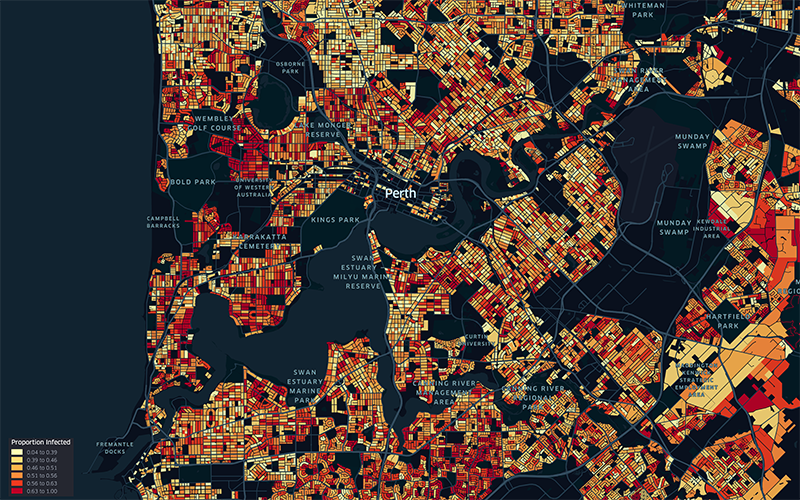Search
Showing results for "A"

News & Events
Sophisticated new modelling suggests keeping mask mandate could prevent 147,000 COVID-19 casesWA’s current Omicron COVID-19 outbreak could jump by 147,000 cases if mask mandates are abandoned before the Easter long weekend, according to sophisticated new modelling.
Research
Folate pathway gene polymorphisms and risk of childhood brain tumors: Results from an Australian case-control studyRecent research suggests that maternal folic acid supplementation is associated with a reduced risk of childhood brain tumors (CBT); polymorphisms in folate...
Research
Epidemiology of Neonatal Acute Respiratory Distress Syndrome: Prospective, Multicenter, International Cohort StudyAge-specific definitions for acute respiratory distress syndrome (ARDS) are available, including a specific definition for neonates (the "Montreux definition"). The epidemiology of neonatal ARDS is unknown. The objective of this study was to describe the epidemiology, clinical course, treatment, and outcomes of neonatal ARDS.
Research
Mapping BCG vaccination coverage in Ethiopia between 2000 and 2019The Bacille-Calmette–Guerin (BCG) vaccination remains the primary strategy to prevent severe disseminated TB in young children, particularly in high TB-burden countries such as Ethiopia. Accurate knowledge of vaccination coverage in small geographical areas is critically important to developing targeted immunization campaigns. Thus, this study aimed to investigate the spatiotemporal distributions and ecological level determinants of BCG vaccination coverage in Ethiopia.
Research
Associations between the built environment and emotional, social and physical indicators of early child development across high and low socioeconomic neighbourhoodsEmerging evidence indicates that the built environment influences early child development. Access to, and the quality of, built environment features vary with the socioeconomic status (SES) of neighbourhoods. It has not yet been established whether the association between built environment features and early child development varies by neighbourhood SES.
Research
Retinal differential light sensitivity variation across the macula in healthy subjects: Importance of cone separation and loci eccentricityMicroperimetry measures differential light sensitivity (DLS) at specific retinal locations. The aim of this study is to examine the variation in DLS across the macula and the contribution to this variation of cone distribution metrics and retinal eccentricity.
Research
Addressing normalization using culturally relevant approaches: An important adjunct to reducing the burden of impetigo and scabiesImpetigo, a bacterial infection caused by Streptococcus pyogenes and S. aureus of the superficial dermis affects up to 162 million children at any one time. Three out of every five school-children in Samoa have active or recently healed impetigo, far higher than the global median impetigo prevalence surpassing previous estimates for the Oceania region.
Research
Performance of the Autism Observation Scale for Infants with community-ascertained infants showing early signs of autismWe investigated whether a commonly used research assessment - the Autism Observation Scale for Infants (AOSI) - accurately measures autism behaviours among infants showing early signs of autism identified within the community. The AOSI is often included in studies tracking the development of infants at increased likelihood of autism, such as the infant siblings of diagnosed children. However, the suitability of this measure has not previously been tested with community-referred infants.
Research
Why do Victims become Perpetrators of Peer Bullying? Moral Disengagement in the Cycle of ViolencePrevious studies have shown that there is overlap between victimization and the perpetration of bullying, and social and motivational variables are known to mediate this relationship. However, the effects of different moral disengagement strategies have not been studied, despite the fact that they exert a major influence on aggressive behavior.
Research
Intellectual disability in children conceived using assisted reproductive technologyThe risk of intellectual disability was increased in children born after assisted reproductive technology in Western Australia from 1994 to 2002
